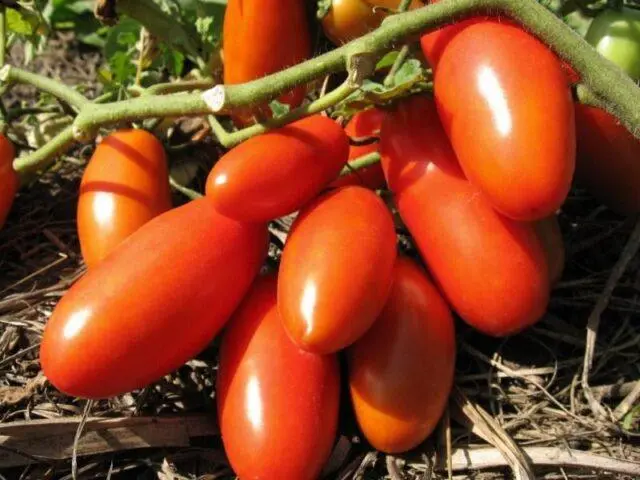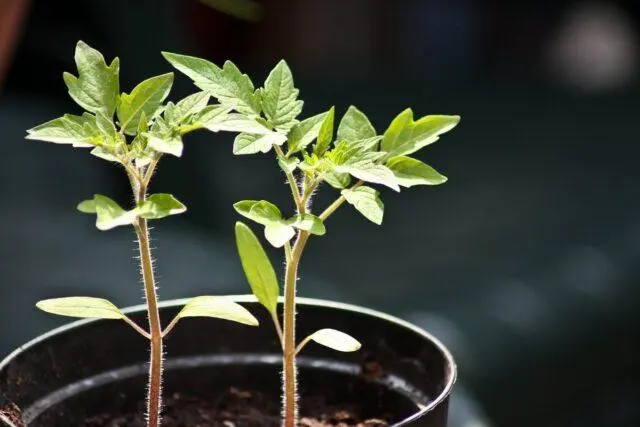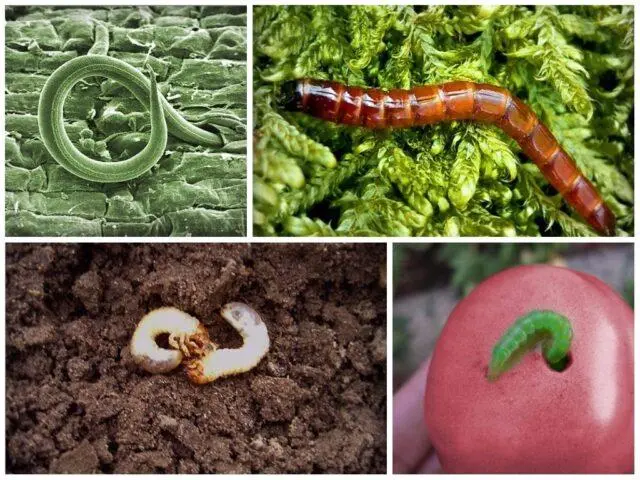Contents
Tomato No worries, no hassle – cold-resistant, early ripening, determinant, versatile variety that does not need pinching. Unpretentious in care, rarely gets sick. Cultivated both in the greenhouse and in the open field. With appropriate agroponics, the yield does not depend on the place of cultivation.
History of breeding
Tomato No worries, no hassle bred by breeders. They worked to ensure that the culture met most of the requirements of gardeners: it gave a good harvest, had immunity to late blight, and did not require pinching skills. The variety is not included in the State Register.

Organizer of culture – Uralsky Dachnik
Description of the tomato variety No worries, no hassle
Tomato No worries, no hassle – undersized early ripening variety. The height of the bush does not exceed 45-50 cm, the stem is erect, so there is no need to tie up the plant.
The fruits grow in clusters, each with 5-6 pcs. Tomato berries No worries, no hassle, fleshy, oblong in shape, with a slightly elongated nose. The color of the tomatoes is juicy red, the skin is smooth, but dense. Weight varies between 50-60 g.
The taste of the tomato has a slight sourness, but the sweetness of the fruit outweighs it.
Characteristics of a tomato No worries, no hassle
The main plus of the tomato variety No worries, no hassle – cold resistance. The tomato is suitable for cultivation in risky farming regions. They practice growing under the film and in the open field.
Tomato yield No worries, no hassle
The yield is high. The variety is resistant to low temperatures, it is planted in the ground early enough. The full return of the crop occurs before the onset of the August rainy season, when late blight affects the fruits of the tomato.
Disease and pest resistance
The best prevention to help minimize tomato disease is to follow planting and crop rotation patterns. The early ripe species, although resistant to ailments, is susceptible to pests and fungal diseases. Bushes cultivated under the film and on the open ground, each get sick in its own way.
In the greenhouse, from excess moisture, different types of rot (white, brown, vertex) may appear. Outdoor tomatoes are susceptible to fungal and viral diseases.
Pests threaten cultivar bushes in both cases. The most dangerous is the Colorado potato beetle. The whitefly butterfly does not lag behind, causing damage both in the greenhouse and in the open field.
Methods of Use
The fruits of the variety are small in size, they can be dried. So they retain all the useful qualities. Tomatoes of this variety are used fresh in salads, as well as for conservation.

Due to the fleshiness, the fruits are ideal for making juices, sauces, ketchups.
Advantages and disadvantages
Summer residents fell in love with the culture, because the variety ripens very quickly when the cost of tomatoes on the market is quite high. The earlier the seedlings are planted, the more profitable the sale of the crop.
One of the undoubted advantages of the culture is a good yield with minimal maintenance costs.
The advantages of the variety No worries, no hassle include:
- precocity;
- unpretentiousness in care;
- cold resistance (the possibility of growing in central Our Country, in the Urals, in Siberia);
- high resistance to diseases and pests;
- versatility of application;
- possibility of transportation;
- excellent taste;
- culture does not require formation, pinching.
There are few downsides to tomatoes, but they do exist. To obtain a good harvest, the variety No worries, no hassle has to be cultivated in seedlings. If the air temperature is above + 30˚С, the fruits do not knit. When growing in a greenhouse, gardeners note the irrationality of the use of planting areas. Low-growing bushes occupy the same area as indeterminate ones, but their yield is much less than varieties growing up to 2-2,5 m.
Peculiarities of growing
Tomato No worries, no hassle for cultivation in a greenhouse, it is recommended to sow in late March – early April. If the variety will be grown in open ground, sowing is carried out 50-60 days before transplanting to a permanent place.
Seeding on seedlings
Pickled varietal seeds do not need to be soaked in a solution of potassium permanganate before sowing. Disinfection is carried out for planting material collected by hand.
The prepared container is filled with soil mixture. At a distance of 1 cm from each other, grooves are made, planting material is laid out in them. The gap between the seeds is at least 1-1,5 cm. Sprinkle a 0,5-1 cm layer of soil on top, water with warm water. The container is covered with a film, sent to a warm room, where the air temperature does not fall below + 20˚С.
After the emergence of seedlings, the shelter is removed. The temperature in the room is reduced to + 15˚С.
Picking, transplanting into the ground
A pick in individual pots is carried out in the phase of two true leaves. The earth near the seedlings is crushed (compacted), after which the plant is watered.

Before planting a variety under a film or in open ground, seedlings should be hardened
The day before the transfer to the “permanent place of residence”, the seedlings are well poured with water. Transplantation is recommended to be done by transshipment, on a cloudy or rainy day. In this case, the process of adaptation to a new place will be painless.
Watering
Basic irrigation rules:
- Watering is carried out with warm settled water.
- The procedure is carried out in the morning or evening hours, when there is no scorching sun.
- Pour water strictly under the root, without falling on the leaves.
Frequent watering of a tomato is not welcome. Irrigation is carried out once a week at the rate of 5 liters for each bush.
Weeding, weeding
During the growing season, the tomato must be spudded twice. The first time the procedure is carried out at the moment when, after transplantation, the rudiments of roots appear on the stem. The second time, when the bottom of the stem turns blue.
Feeding
During the season, tomatoes of the variety No worries, no hassle are fertilized three times:
- The first feeding is carried out a week after transplantation. To prepare the solution, take 10 liters of water, 1 tbsp. l. nitrophoska, 0,5 l of liquid mullein. Consumption for 1 bush – 0,5 liters.
- The second time the tomatoes are fertilized during flowering. Top dressing is prepared as follows: 1 tbsp is dissolved in a bucket of water. l. superphosphate, 1 tsp. potassium sulfate, 0,5 l of bird droppings. Pour 1 liter of solution under the plant.
- When the fruits are tied, it is necessary to feed the seedlings with boron, iodine, magnesium and potassium. To prepare the solution, take a bucket of water, add 1,5 liters of sifted ash, 10 ml of iodine, 10 g of boric acid powder. Under one bush contribute 1 liter of solution.
Pest and disease control
Timely detection of the disease will help preserve the crop. It is recommended to periodically inspect plants for the presence of parasites and ailments. To protect the tomato No worries, no hassle from the disease, it is possible to treat the beds with fungicides for preventive purposes (Radomil, Acrobat).
Agricultural techniques that will help avoid infection of tomatoes with diseases:
- compliance with crop rotation – it is possible to cultivate tomatoes in the same place no earlier than after 3-4 years;
- pre-sowing tillage, fertilization;
- seed disinfection;
- compliance with the irrigation regime, mulching the site.

Manual control of pests that affect tomato beds is ineffective
It is recommended to treat the plants with insecticidal preparations before flowering. The Commander, Iskra, Bison will help to cope with the Colorado potato beetle. You can repel the whitefly by means of Aktellik, Aktara.
Conclusion
Tomato No worries, no hassle – an ideal variety for beginner gardeners who do not have sufficient experience in caring for plants of the nightshade family. Suitable for growing in any climatic zones, including the Urals and Siberia, is not afraid of a short-term cold snap.









